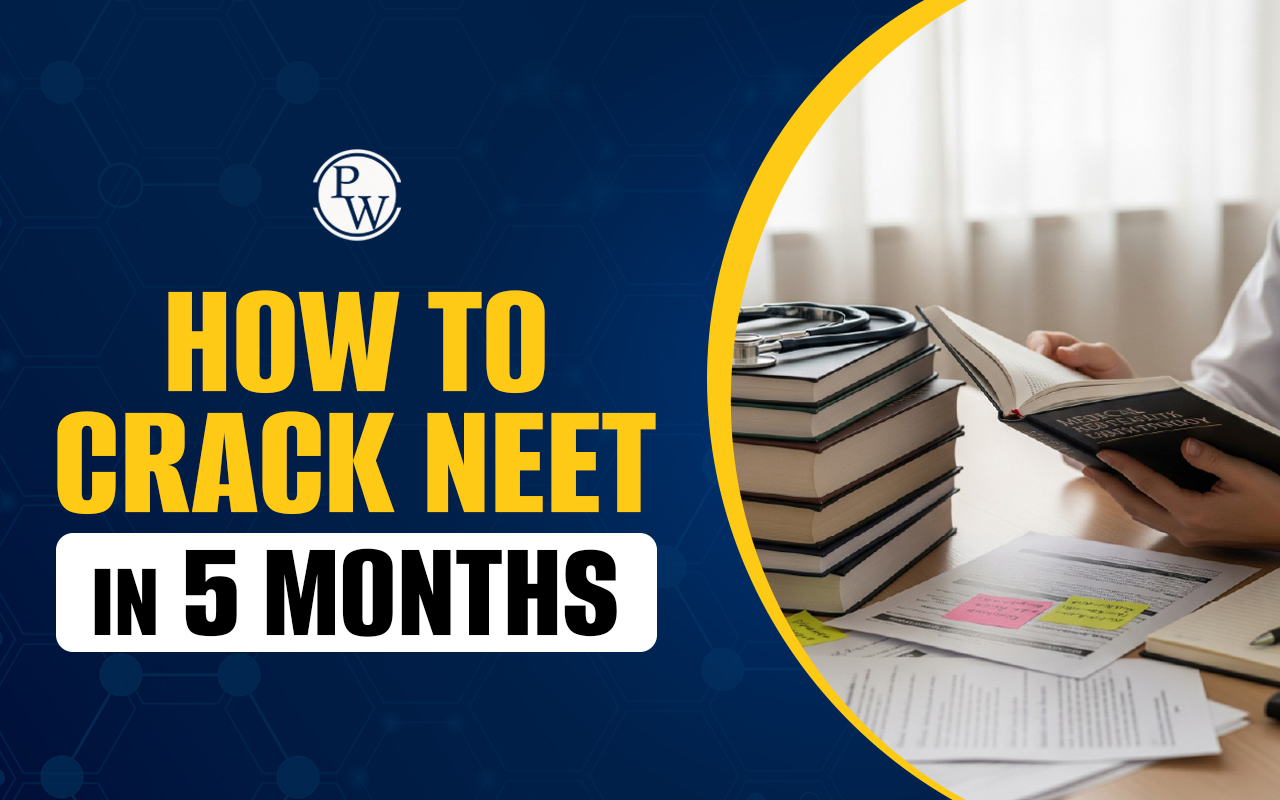
Molecular Basis of Inheritance MCQ: Molecular Basis of Inheritance is an important chapter in NEET Biology. This topic explains how genes are passed from parents to children and how DNA carries instructions for life. In the NEET Exam, multiple-choice questions (MCQs) are very important because they help students check their understanding. This chapter has around 14% weightage in the NEET Biology syllabus, making it very important for students preparing for the exam.
MCQs are a great way to practice because they test key concepts quickly. Solving these questions helps students improve their speed, accuracy, and confidence. By practicing MCQs regularly, students can identify their weak areas and work on them to improve their performance in the exam.
Molecular Basis of Inheritance MCQ Overview
Molecular Basis of Inheritance provides MCQs along with explanations. These questions cover topics like DNA, RNA, replication, transcription, translation, genetic code, mutation, and gene regulation. If you want to learn this chapter in detail, you can refer to Molecular Basis of Inheritance NEET Notes. These notes explain all concepts in an easy way, making it simpler for students to understand the topic.
Download Last 5 Years NEET Previous Year Question Papers PDF
Free NEET PYQ PDF
What is Molecular Basis of Inheritance?
The Molecular Basis of Inheritance explains how traits are passed from one generation to the next at the molecular level. It mainly focuses on DNA (Deoxyribonucleic Acid), which is the genetic material in most living organisms. This chapter includes:
-
DNA Structure: DNA is a double-helix structure made up of nucleotides.
-
DNA Replication: The process by which DNA makes copies of itself.
-
RNA (Ribonucleic Acid): RNA helps in making proteins from DNA instructions.
-
Transcription: The process of making RNA from DNA.
-
Translation: The process of making proteins from RNA.
-
Genetic Code: The set of rules by which RNA sequences are converted into proteins.
-
Regulation of Gene Expression: How genes are turned on and off.
-
Mutations: Changes in DNA that can lead to variations in traits.
Molecular Basis of Inheritance MCQ with Explanations
Here are some important Molecular Basis of Inheritance MCQ with explanations:
Q1. The process of activation of amino acids in the presence of ATP and its linkage to their cognate tRNA is known as:
-
charging of tRNA.
-
charging of ATP.
-
capping of tRNA.
-
aminoacylation of ATP.
Answer: (A) charging of tRNA.
Explanation: The process by which an amino acid is attached to its specific tRNA with the help of ATP is called charging of tRNA or aminoacylation of tRNA. This is catalyzed by aminoacyl-tRNA synthetase.
Q2. Untranslated regions (UTRs) in mRNA are present:
-
at both 5' -end and at 3' -end.
-
at only 5' end.
-
at only 3' end.
-
after start codon and before stop codon.
Answer: (A) at both 5' -end and at 3' -end.
Explanation: UTRs (Untranslated Regions) are non-coding regions present at both the 5' and 3' ends of mRNA. They help in mRNA stability, translation efficiency, and regulation of gene expression.
Q3. In Oswald Avery, Colin MacLeod and Maclyn McCarty experiment, the process of transformation was affected by which of the following enzymes?
-
DNase
-
RNase
-
Protease
-
Both RNase and protease
Answer: (A) DNase
Explanation: In the Avery, MacLeod, and McCarty experiment, DNA was identified as the genetic material. When DNase (DNA-digesting enzyme) was added, transformation did not occur, proving that DNA, not proteins or RNA, carries genetic information.
Q4. RNA acts as the genetic material in:
-
bacteriophage lambda.
-
φ ×174 bacteriophage.
-
QB bacteriophage.
-
Escherichia coli.
Answer: (C) QB bacteriophage.
Explanation: Some viruses, like the QB bacteriophage, use RNA as their genetic material instead of DNA. Such viruses are called RNA viruses or retroviruses.
Q5. If a double-stranded DNA has 20% of cytosine, what will be the percentage of adenine in it?
-
20%
-
40%
-
30%
-
60%
Answer: (C) 30%
Explanation: According to Chargaff's rule, the amount of Cytosine (C) = Guanine (G) and Adenine (A) = Thymine (T). If C = 20%, then G = 20%.
So, A + T = 100 - (C + G) = 100 - 40 = 60%.
Since A = T, A = 30%
Q6. During transcription, the site of DNA molecule at which RNA polymerase binds is called:
-
Promoter.
-
Regulator.
-
Terminator.
-
operator.
Answer: (A) promoter.
Explanation: A promoter is a DNA sequence where RNA polymerase binds to start transcription. It is present upstream of the gene and regulates the initiation of transcription
Q7. Histones are rich in:
-
lysine and histidine.
-
valine and histidine.
-
arginine and lysine.
-
arginine and histidine.
Answer: (C) arginine and lysine.
Explanation: Histones are positively charged proteins rich in arginine and lysine. These basic amino acids help histones bind tightly to negatively charged DNA, forming nucleosomes.
Q8. Assertion A: The S strain of Streptococcus pneumoniae forms smooth, shiny colonies (S), while the R strain produces rough colonies (R).
Reason R: The S strain is virulent and caused pneumonia, whereas the R strain is avirulent and did not cause pneumonia in mice.
-
A is true but R is false.
-
A is false but R is true.
-
Both A and R are true and R is the correct explanation of A.
-
Both A and R are true but R is not the correct explanation of A.
Answer: (C) Both A and R are true and R is the correct explanation of A.
Explanation: The S strain has a polysaccharide coat, making it virulent, while the R strain lacks this coat and is avirulent. This was observed in Griffith's experiment on bacterial transformation.
Q9. Identify the incorrect statement.
-
In prokaryotes, the structural gene is polycistronic.
-
In eukaryotes, structural genes have interrupted coding sequences.
-
Eukaryotes have split gene arrangement.
-
Intervening sequences appear in mature RNA.
Answer: (D) Intervening sequences appear in mature RNA.
Explanation: Intervening sequences (introns) are removed during RNA splicing in eukaryotes. Mature RNA contains only exons, which code for proteins.
Q10. In the DNA molecule:
-
The proportion of adenine in relation to thymine varies with the organism.
-
There are two strands which run antiparallel, one in 5’ → 3’ direction and other in 3’ → 5’.
-
The total amount of purine nucleotides and pyrimidine nucleotides is not always equal.
-
There are two strands which run parallel in the 5’ → 3’ direction.
Answer: (B) There are two strands which run antiparallel, one in 5’ → 3’ direction and other in 3’ → 5’.
Explanation: DNA has a double-helix structure where the two strands run antiparallel to each other—one strand runs in 5’ → 3’ direction, and the other in 3’ → 5’ direction.
Q11. The human chromosomes with the highest and lowest number of genes are, respectively:
-
chromosome 21 and Y.
-
chromosome 1 and X.
-
chromosome 1 and Y.
-
chromosome X and Y.
Answer: (C) chromosome 1 and Y.
Explanation: Chromosome 1 has the highest number of genes, while the Y chromosome has the fewest genes. The Y chromosome carries mainly male-specific genes.
Q12. Which of the following is not a criterion that a molecule must fulfill to act as genetic material?
- It should be able to generate its replica (Replication).
- It should be able to express itself in the form of ‘Mendelian Characters’.
- It should be reactive chemically but stable structurally.
- It should provide the scope for slow changes (mutation) required for evolution.
Answer: (C) It should be reactive chemically but stable structurally.
Explanation: A genetic material must be chemically stable to store information accurately. If it were highly reactive, it would mutate frequently, leading to errors in genetic transmission.
If you don't want to miss the chance to get good score in NEET 2025 exam, you must join PW NEET online coaching which gives you a chance to study under the guidance PW faculty, along with you will get syllabus-oriented study material, Mock test series and much more.
Molecular Basis of Inheritance MCQs FAQs
How can I prepare for Molecular Basis of Inheritance MCQs?
What is the principle basis of inheritance?
What is the molecular basis of inheritance class 12?
Who proposed molecular basis of inheritance?
Where can I find more MCQs for practice?










